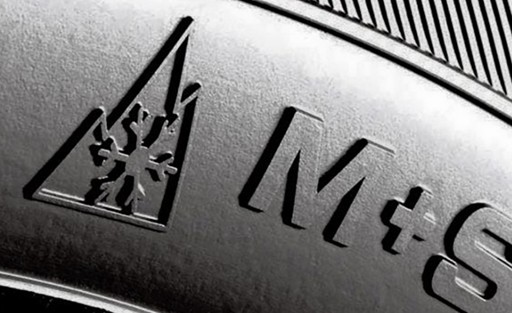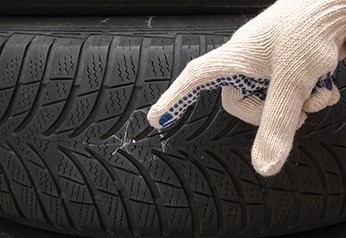
May 26, 2022
Tyre Number Meanings Explained In Full
Have you ever noticed that your tyre has numbers on the side? This article will break down these tyre markings' meaning and significance to help you on your daily drive.
What do the numbers on tyres mean?
These numbers, coupled with letters and symbols shaped on the sidewall, tell you the necessary information about your tyre.
Why is it important to learn them?
Knowing your tyre’s specifications lets you:
- Choose the best tyres for your vehicle.The sidewall bears the tyre brand and pattern. So, if you’re satisfied with your old tyres’ performance, you can choose to have similar tyres fitted.
- Guarantee your safety. Your tyres need to match your vehicle’s specifications. Incompatible tyres compromise not only your ride’s performance but also your safety.
- Properly maintain tyres. The numbers tell you many valuable things about your tyre, such as its speed rating, load index, how to install it, the maximum pressure it can take and many more.
- Get your money’s worth when you buy tyres. Aside from your tyre’s manufacturing date, the sidewall markings also show its safety standards and certifications. This way, you know you’ve made a good investment.
Your Basic Tyre Numbers Explained
A. Tyre Type
The first letter tyre marking explains what kind of tyre it is and for what vehicle.
P indicates a tyre for Passenger vehicles like cars, SUVs, minivans and smaller pickup trucks.
LT stands for Light Truck, a tyre compatible with 4x4 vehicles and light trucks and can carry and tow heavy loads. LT stands for Light Truck, a tyre compatible with 4x4 vehicles and light trucks and can carry and tow heavy loads.
ST stands for Special Trailer, a tyre used by trailers for travel, utility, and boats. If there’s no letter before the first number, you have a European metric-sized tyre. Though this tyre also uses millimetres to measure tyre width, it has a different way of calculating load and pressure values.
Why it matters: Tyre types have different purposes. While LT tyres are built for tough driving conditions, Passenger tyres are designed for lighter vehicles, providing a smooth and quiet ride.
B. Tyre Width
The first number you see on your tyre code indicates the width of the tyre in millimetres. Also called Section Width, Tyre Width is the distance from one sidewall to the other. Aside from your sidewall, the tyre size is visible on the driver’s door jamb, the vehicle’s manual, glove compartment, and petrol cap.
Why it matters: By looking at this specific number on your tyre code, its meaning is evident, serving as a gauge for your tyre’s grip, noise level, ride comfort, and rolling resistance. The wider your tyre, the better contact it makes with the ground. While this improves grip and lessens rolling resistance, it also increases road feedback and ride stiffness, even at higher speeds.
C. Aspect Ratio
The number after the tyre width and slash is read as a percentage and is the height of the tyre from the rim to the tread— in relation to the tyre width. So, if the number is 65, the tyre’s height is 65% of its width.
Why it matters: The higher the tyre’s Aspect Ratio, the taller its sidewall. Typically, trucks, buses, and some prestige cars have high Aspect Ratios for the tyre to accommodate more air, thereby boosting ride comfort. Meanwhile, tyres with shorter sidewalls may not be as comfortable to drive but have better handling and cornering abilities.
D. Construction
This letter indicates how manufacturers put together the tyre components such as the bead, sidewall, tread, belt, and carcass.
R stands for Radial, today’s most common tyre construction. Its rubber-coated plies or layers of steel and fabric are arranged perpendicular to the tread and parallel to each other to strengthen the tyre and maintain its shape. Radial Tyres provide better grip and durability while increasing ride comfort and lowering rolling resistance.
D indicates a Diagonal or Bias-Ply internal construction, with plies laid in crisscross patterns and at contradictory angles. This tyre is often used by port and terminal vehicles because of its heavy lifting and towing capabilities.
E. Rim Diameter
After the letter that stands for tyre construction is the Rim Diameter, measured in inches. This is the measurement taken from the wheel flange—or the rim’s protruding edge that secures the wheel to the axle—to its opposite side.
Why it matters: Your tyre’s Rim Diameter tells you its compatible wheel size. For example, a Rim Diameter of 15 inches means you should fit it to a 15-inch diameter wheel. However, racing and off-road enthusiasts like mixing and matching wheel and tyre sizes to boost comfort and performance.
F. Load Rating
Also called Load Index, the Load Rating indicates your tyre’s maximum load capacity while operating at its maximum permitted speed with proper tyre pressure. But the number on your tyre is merely a code, not the actual weight it can carry. To know the weight in kilograms, check our Tyre Load Index Table. For instance, a Load Rating of 89 means that your tyre can bear up to 580 kg.
Why it matters: A tyre with a lower Load Rating than your Original Equipment Manufacturer (OEM) tyre will not be able to carry the weight of your vehicle, passengers, and other equipment. This mistake may result in tire damage or, worse, an accident.
Also read Your Tyre Load Rating Explained
G. Speed Rating
A letter represents your tyre’s Speed Rating or Speed Index--the maximum speed you can safely drive your car when tyres are properly inflated and operating under load. A higher rating gives you better handling and control at increased speeds. To find out the corresponding rate of this symbol, take a look at our Tyre Speed Rating Chart. A speed rating of H, in particular, refers to a Speed Rating of 210 kph.
Why it matters: A Speed Rating that’s too low for your vehicle means that the tyre may overheat during fast drives and may result in a blow-out or a loss of control over your ride.
Also read Your Tyre Speed Rating Explained
What do the other Tyre Sidewall Markings Mean?
To guide you in deciphering other symbols on your tyre, we’ve categorised them according to Tyre Capabilities,, Tyre Information, and External Design.
Tyre Capabilities
Image credit: caranddriver.com
Three-Peak Mountain Snowflake (3PMSF)
This symbol means that your tyre has passed light to medium snow traction and acceleration standards. Constructed with soft rubber that stays pliant even in frosty conditions, this tyre has siping that improves snow grip.
M+S
You can find the Mud and Snow marking on winter, all-season and off-road tyres. Its tread blocks have wide voids, making it capable of rolling on mud, loose surfaces, sand, and rough trails.
Run Flat
Compared to a standard tyre, a runflat lets you drive about 80 kilometres more, even when punctured. This tyre gives you enough time to safely get to a service station instead of pulling over on the road to change tyres. Tyre brands have different symbols for their run-flat tyres.
RFT (Run-Flat Tyre) - Bridgestone
SSF (Self-Supporting Tyre) - Continental
DSST (Dunlop Self-Supporting Tyre) - Dunlop
EMT (Extended Mobility Technology) - Goodyear
ZP (Zero Pressure) - Michelin
Run Flat - Pirelli
Tyre Information
DOT
A U.S. Department of Transportation marking means that your tyre has passed tread depth, inflation pressure, and safety standards. After the DOT mark, you’ll find the tyre’s 12-digit serial number.
Tyre Date Code
The last three serial number numbers after DOT (usually encircled) are the Tyre Date Code. For example, a code of 3507 means that the tyre was manufactured on the 35th (first two digits) week of 2007 (last two digits).
ECE
Sometimes abbreviated to E or e, ECE stands for the Economic Commission of Europe, which sets safety standards for tyres made in the region. An additional S (for Sound) means that the tyre follows the commission’s noise regulations.
INSIDE/OUTSIDE
Asymmetric tyres combine two tread patterns that make it capable on both wet and dry surfaces. The Inside/Outside marks are guides in tyre installation. Inside indicates the tyre side that should be mounted facing the wheel hub. This side usually has smaller blocks than the side marked with Outside, which must be fitted facing outward.
JLB
This acronym means that a Jointless Band (usually made of nylon) is wrapped around the tyre, improving its strength and handling.
RF
Sometimes marked EXL (Extra Load), REF, RED, and REINF, the RF symbol specifies a Reinforced Tyre with boosted durability and load-carrying capacity.
Arrow symbol
This symbol is moulded on directional tyres, which rotate or roll in only one direction. The arrow is especially useful in installing the tyre, which you must fit on a vehicle facing the arrow’s path. Failure to do so can reduce the tyre’s capabilities and hasten tread wear.
TL/TT
TL stands for Tubeless Tyre, and TT refers to Tube Type Tyre. As their names suggest, Tubeless Tyres don’t have a separate internal tube that contains air, while Tube Type Tyres do. Most modern tyres are tubeless because they are lighter, have less rolling resistance, and are easily repaired when punctured.
TWI
You can find the Tread Wear Indicator symbol on the tyre’s inside tread grooves. When the tread has worn down to the mark, you should replace your tyres soon. The letters TWI are positioned 1.66mm-deep, the legal minimum for tread wear.
Also read When to Replace Tyres?
External Design
BLT - Raised Black Letters
BSW - Black Sidewall
OWL - Outlined White Lettering
RBL - Recessed Black Lettering
RWL - Raised White Lettering
Also read How to Do Your Own White Wall Tyres
And while it's important to know your tyre codes’ meanings or to have your tyre codes explained, all tyre markings depend on the tyre's label or brand, so it’s best to consult a tyre expert when buying and mounting tyres.
With Tyroola’s wide range of products and professional knowledge, we’ll make sure that the tyres you’re purchasing are a perfect fit for your vehicle, needs, and budget.
More tyre tips await you on our blog and guides!







